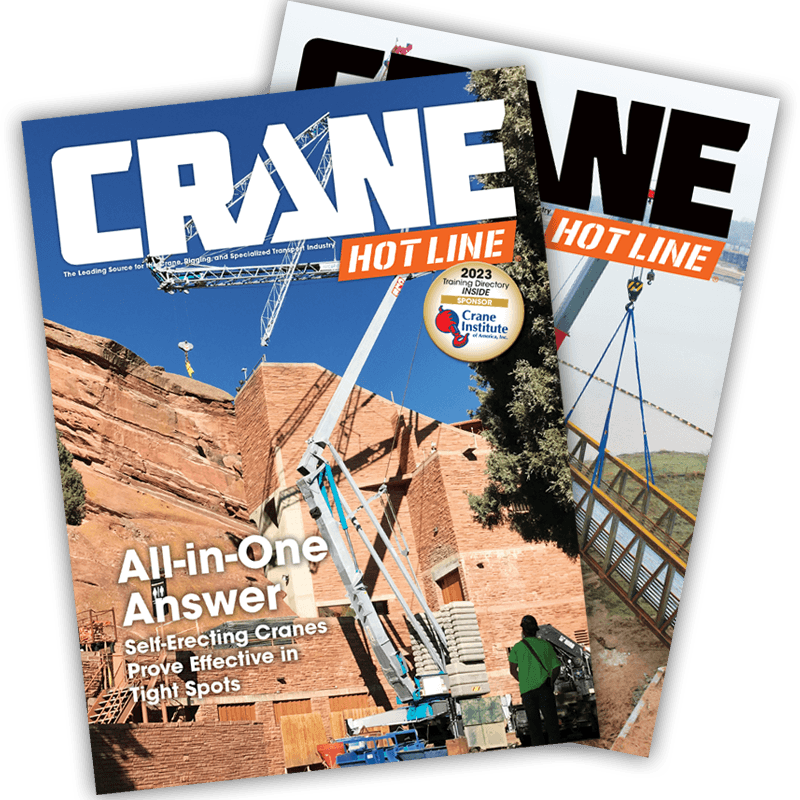Making Basement Work a Breeze
May 10, 2006 — When Altec Industries, Inc.,

Enlarge Image
Image 1. Setting concrete forms is just one of many jobs the Altec AC26-103R can perform.

Serving specialized applications
Let me begin by saying, this particular unit is a lot of truck. This AC26-103R is fitted with a 44-foot, two-section manual telescoping swing-away jib. Beyond these standard specifications, this particular installation is anything but ordinary. Custom made some major modifications to this unit, all at the request of the buyer. On the day of my visit, it was being delivered to its proud new owner Jones Construction Co. (Jones), a residential foundation contractor located in Town of
Because the bulk of the contractor's work uses aluminum forms for pouring basement walls in place, Jones wanted a unit that could carry as many of these forms as possible, set them close to the job, and place the concrete in those forms via a concrete hopper. Jones' main problem was that the peak part of the building season falls in the spring — when the ground is at its wettest, causing traction to be a huge issue. As you can see in Image 1, Altec's AC26-103R has taken on this challenging basement work head on.

Customization is key
As it happens, the unit featured in this equipment review is the first rear-mount configuration of the AC26-103R to be delivered. As you can see in Images 2 and 3, this is no typical installation. The single biggest customization was made to the drive system. That third axle is not the tag axle you see; it is a tri-drive (8X6 configuration) custom fitted by Custom. These are Dana Spicer axles, riding under a Peterbilt 357 chassis with a 475-hp Caterpillar C15 engine mated to a 16-speed Spicer transmission.

Enlarge Image 2
Images 2 and 3. Altec AC26-103R with “customized” carrier.
Enlarge Image 3

Custom likes this axle set up for many reasons — two of the biggest being the dual-capacity enhancements that come from the extra axle. The easiest way to add extra payload to a truck is to add a fourth axle. Typically, it would be a free-floating tag axle. As Custom's President Fred Ross stated, a tag axle is just dead weight. A tri-axle drive gives you not only the extra carrying capacity but also the added traction and power of an additional drive axle. It is also a great alternative to a powered steering axle. According to Ross, this configuration saves as much as 7,500 pounds in added weight when compared to a set up that uses a typical powered steering axle. Of course every pound saved here increases the amount of payload the chassis can carry. This is very important to the folks at Jones, as they need to carry as many of the concrete forms as possible when traveling to jobsites. The tri-axle configuration coupled with the rear-mount boom allows Jones' crew to back the truck into just about any jobsite condition, putting the truck and the reach of the rear-mounted crane closer to the work.
Another very important feature for Jones was the clearance height of the boom when it was in the stowed position. The greater the clearance between the bottom of the boom and the bed maximizes the number of concrete forms that can be carried. These forms are 8'x36” and are stacked like cards. Ideally, the crew likes to carry as many as 120 of them on the bed itself. Many more can be stowed on a special tag trailer that they pull behind the rig, which is part of the reason they speced the big Cat engine. Again, Custom answered this need by cutting the cross members out of the standard bed and dropping it 5 inches (Image 4). Lowering the bed meant lower profile tires would be needed, so 11R X 22.5 Bridgestones are utilized to keep the tolerances required.

Enlarge Image
Image 4. The cross members have been cut and lowered to allow an increase of 5 inches in under boom clearance.
Next issue we will discuss all the features of the AC26-103R and get first-hand operational impressions from the owner and operator of this particular unit.


